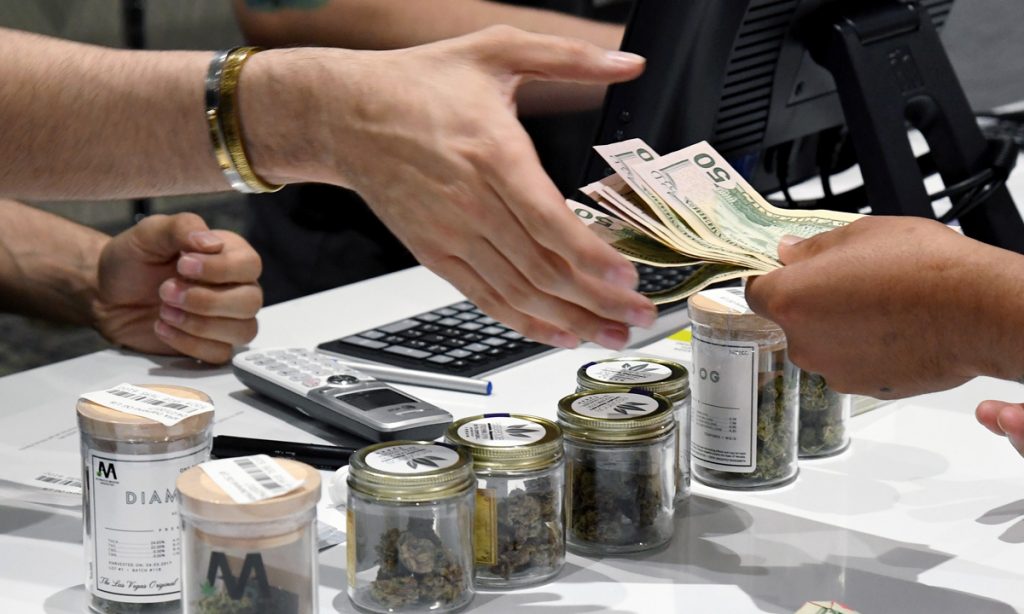
COVID cannabis use is expected to remain high even after the pandemic
Cannabis use rose during the height of the COVID crisis as fear and lockdowns led many to increase the amount consumed. According to a new survey by Stifel, it doesn’t look like consumers will return to pre-pandemic consumption levels. This is good news for cannabis companies.
The survey also found that despite increasing options for discretionary spending, cannabis remains a resilient category as people relax COVID restrictions. The research firm surveyed both U.S. and Canadian cannabis users and said it reiterated its view that the U.S. landscape was looking positive, while pointing to mixed prospects for Canada.
The survey confirmed that price is more important to Canadians than to US cannabis buyers. It also learned that regular cannabis users continue to prefer flowers, while new cannabis users prefer edibles, beverages, and topical products. Another key point in the survey is that location is the most important element in store loyalty. “We believe these three categories have the potential to drive mainstream conversion due to their accessibility, discretion, ease of use and familiarity with headset data, suggesting greater branding power for these segments compared to inhalation products.”
Photo by Matt Moloney via Unsplash
No change after the pandemic
The Stifel survey found that 65% of consumers after COVID said they continued to use it, with 17% indicating increased consumption. “We believe that rising incidence and consumption by existing consumers will be consistent tailwinds in the categories, but the growth of the Canadian market is based on the continued transformation of the illicit market through the expansion of retail access and product availability.” The report also noted notes that the food market in Canada has been difficult for manufacturers and believes the category will not be fully successful without regulatory changes.
RELATED: The Cannabis Industry “Substantial” Benefit From COVID-19
The category is relatively new, but manufacturers are subject to strict regulatory requirements. There are limits on THC levels and packaging restrictions make it difficult to build brand awareness. Edibles also cannot resemble any type of candy that might appeal to children, which has fueled the illegal market.
Bargain buyers
Canadian consumers are more price sensitive than US consumers. Stifel said price and quantity were the top two priorities in any survey, with Canadians placing a much higher priority on price (31-37% versus 25-28%) than US consumers significantly beating the next highest priority (10- 15% compared to 3.). -5%).

The survey found that 30% of Canadian consumers viewed price as the most important factor in deciding where to buy a retail outlet. “We believe this underscores the difficulty Canadian producers are making profitably from the growth of the Canadian cannabis category. Novelty and branding were the least important priorities for Canadian consumers. The headset trends show significant sales for the top ten brands with seven of the current top 10 brand discount or deep discount offers. “
Location, location, location.
Stifel said the number one factor determining where Canadians buy cannabis is location. The survey found that 83% of consumers typically buy from the same place, which underscores strong customer loyalty. “We see the results in supporting well capitalized and established operators who are able to expand rapidly and secure desirable locations, especially in Ontario. Proximity to the shops, price, product selection and technology were among other factors that influenced purchasing decisions according to their importance. “
RELATED: Weed, booze, sex, and other consumer trends are set to continue in 2021
Beyond the survey, the analysts looked at active store licenses (both absolute and per capita) and other availability metrics by province and region of the Greater Toronto Area (GTA). They found that some areas had passed the saturation point and others had extremely restricted access, making room for many more stores. That could mean that companies are consolidating underperforming businesses and investing more heavily in better locations.
Finally
“While we continue to outline a negative overall approach to top Canadian manufacturers, LPs have the opportunity to invest in research and development and bring products to the Canadian market. The US MSOs have the opportunity to use the growing infrastructure to commercialize new product concepts. “
This article originally appeared in the Green Market Report and was republished with permission.

Post a comment: